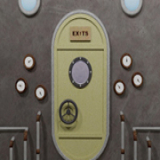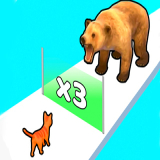Welcome to the exciting world of HTML5 game development where small changes can lead to significant improvements in your gaming projects. From mastering game design to optimizing user experience and exploring innovative monetization strategies, this blog post delves into the key aspects of creating captivating HTML5 games. Are you ready to level up your game development skills? Keep reading to discover how you can make a big difference in your HTML5 games!
A Brief Introduction to html5 Game Development
HTML5 game development has revolutionized the gaming industry, offering game developers a versatile platform to create interactive gaming experiences. With the rise of mobile gaming and the increasing demand for web-based games, mastering the art of HTML5 game development has become essential for game creators.
Evolution of Game Development: HTML5 has paved the way for a new era of game design, moving away from traditional game development tools to more accessible and flexible web development technologies. Game developers are now able to create seamless and engaging gaming experiences directly in the browser without the need for plugins or additional software.
Coding for Games: HTML5 game development involves utilizing various programming languages such as JavaScript, CSS, and HTML to bring game ideas to life. By understanding the fundamentals of these languages and how to leverage them for game mechanics, developers can create visually stunning and high-performing games.
Game Performance Tips: Optimizing game performance is crucial for ensuring smooth gameplay and player engagement. Developers can enhance game performance by implementing efficient coding practices, optimizing graphics and audio elements, and testing games across different devices to ensure compatibility and responsive design.
HTML5 Game Engines: Game engines play a significant role in simplifying the game development process by providing a framework for designing game graphics, animations, and interactions. Popular HTML5 game engines such as Phaser, Construct, and PlayCanvas offer a wide range of features and tools to streamline game creation and development.
Responsive Game Design: With the increasing popularity of mobile gaming, responsive game design has become paramount for reaching a broader audience. Creating games that adapt to different screen sizes and devices ensures a seamless gaming experience for players, whether they are on a desktop, tablet, or smartphone.
Game Mechanics and Testing: Developing captivating game mechanics and conducting thorough testing are essential steps in creating successful HTML5 games. Game mechanics, such as player controls, scoring systems, and level design, contribute to the overall gameplay experience. Rigorous testing helps identify bugs, performance issues, and gameplay flaws that need to be addressed before launching the game.
Game Graphics and Audio: Visuals and sound are integral components of game design that enhance the immersive experience for players. Incorporating high-quality graphics, animations, and sound effects can elevate the overall look and feel of the game, making it more engaging and memorable for players.
HTML5 game development offers a wealth of opportunities for game creators to explore their creativity, innovate in game design, and reach a global audience with interactive gaming experiences. By mastering the fundamentals of HTML5 game development and leveraging the latest tools and techniques, developers can create captivating games that captivate players and stand out in the competitive gaming industry.
Essential Tools and Techniques for Creating html5 Games
Creating compelling and interactive html5 games requires a mix of creativity, technical know-how, and the right tools. Understanding the essential tools and techniques for html5 game development is crucial for bringing your gaming ideas to life. Let's explore some key aspects that can elevate your game development process and help you craft engaging gaming experiences that resonate with players.
Game Development Tools: One of the first steps in creating html5 games is selecting the right tools for the job. Popular game development frameworks like Phaser, Construct, and ImpactJS provide a solid foundation for building interactive gaming experiences. These frameworks offer features such as physics engines, sprite animations, and asset management tools that streamline the development process.
Graphics and Animation: Visual appeal plays a significant role in drawing players into your game. Leveraging tools like Adobe Animate, Aseprite, or Tiled can help you create stunning graphics and animations for your html5 games. From character design to background elements, attention to detail in graphics can enhance the overall look and feel of your game.
Audio Integration: Sound and music are essential components of a memorable gaming experience. Utilizing tools like Audacity or Bosca Ceoil can help you create and integrate sound effects, background music, and audio cues into your html5 games. Well-crafted audio elements can elevate the immersion levels and make your game more engaging for players.
Programming Languages: Proficiency in languages such as JavaScript, CSS, and HTML is fundamental to html5 game development. Understanding how to code game mechanics, implement user interfaces, and optimize game performance are key aspects of utilizing these programming languages effectively. Additionally, knowledge of libraries like jQuery or React can enhance the functionality and interactivity of your games.
Testing and Debugging: Thorough testing and debugging are critical steps in ensuring the quality of your html5 games. Tools like Chrome DevTools, Firebug, or Phaser Debugger can help you identify and fix issues related to game mechanics, performance bottlenecks, and compatibility across different devices and browsers. Regular testing iterations are essential for delivering a polished gaming experience to your players.
Version Control and Collaboration: Working on game development projects often involves collaboration with team members or external partners. Tools like Git, Bitbucket, or GitHub facilitate version control, code management, and collaboration amongst developers. These platforms enable seamless integration of new features, bug fixes, and enhancements into your html5 games.
Incorporating these essential tools and techniques into your html5 game development workflow can empower you to create captivating and seamless gaming experiences. By mastering the technical aspects and leveraging the right tools, you can design games that captivate audiences and stand out in the competitive gaming landscape.
Optimizing Game Performance and User Experience
Optimizing Game Performance and User Experience
When it comes to creating successful html5 games, optimizing game performance and ensuring a seamless user experience are crucial factors that can make or break the success of your game. By implementing the right strategies and techniques, developers can enhance gameplay, retain players, and attract new users. Here are some key tips to optimize game performance and user experience:
Utilize Efficient Game Engines: Choosing the right html5 game engine is essential for optimizing performance. Engines like Phaser and Construct offer powerful tools and features to streamline game development and enhance performance.
Optimize Game Graphics: High-quality graphics enhance the visual appeal of your game, but they can also affect performance. Optimize images, animations, and textures to reduce file sizes and improve loading times without compromising visual quality.
Enhance Game Audio: Audio is a crucial element of the gaming experience. Use compressed audio formats and implement sound effects strategically to enhance gameplay without slowing down performance.
Streamline Game Mechanics: Complex game mechanics can strain performance. Simplify gameplay elements, optimize code, and eliminate unnecessary features to ensure smooth performance on all devices.
Thorough Game Testing: Testing your game across different platforms and devices is essential to identify performance issues. Conduct rigorous testing to detect bugs, optimize performance, and ensure a seamless user experience.
Implement Responsive Design: Make your game responsive to adapt to various screen sizes and resolutions. A responsive design ensures that your game looks and performs well on desktops, laptops, tablets, and mobile devices.
Monitor Game Performance: Utilize tools for performance monitoring and analytics to track how your game is performing. Identify areas for improvement, optimize game elements, and enhance user experience based on data-driven insights.
Optimize Game Networking: Efficient networking is essential for multiplayer games. Implement secure and optimized networking solutions to reduce latency, improve connection stability, and enhance multiplayer gaming experiences.
Prioritize User Experience: A seamless and immersive user experience is key to retaining players. Focus on intuitive controls, engaging gameplay, and smooth performance to keep players coming back for more.
By implementing these optimization strategies and prioritizing user experience, developers can create html5 games that engage players, perform well across devices, and stand out in the competitive gaming market. Optimizing game performance and user experience is a continuous process that requires attention to detail, testing, and iteration to create truly exceptional gaming experiences.
Monetization Strategies for html5 Games
Monetization Strategies for html5 Games
When it comes to creating and releasing html5 games, finding effective monetization strategies is crucial for success. Game developers need to strike a balance between generating revenue and providing an enjoyable gaming experience for players. Here are some key monetization strategies to consider:
In-Game Advertising: Integrating ads into your html5 games can be a profitable way to monetize them. Options include interstitial ads, rewarded videos, and native ads. Carefully implementing ads without interrupting gameplay is essential to keep players engaged.
In-App Purchases: Offering in-app purchases for virtual goods, power-ups, or exclusive content can drive revenue from players who are willing to enhance their gaming experience. Make sure the purchases are enticing but not essential for gameplay to maintain fairness.
Freemium Model: Adopting a freemium model where the game is free to play but offers premium features or content for purchase can attract a larger player base. Providing a taste of the full experience can entice users to invest in upgrades.
Subscription Services: Implementing subscription-based services for access to exclusive game content, regular updates, or ad-free gameplay can create a steady stream of revenue. Offering different subscription tiers with varying benefits can cater to different player preferences.
Sponsorship and Brand Partnerships: Collaborating with brands or sponsors to integrate their products or services into the game can be a lucrative monetization strategy. Sponsored levels, branded in-game items, or customizations can create an additional revenue stream.
Crowdfunding and Donations: Engaging with your player community through crowdfunding platforms or direct donations can help support ongoing game development and updates. Offering exclusive perks or rewards to donors can incentivize contributions.
Licensing and Merchandising: Explore opportunities to license your html5 game for distribution on other platforms or devices. Additionally, consider creating merchandise based on your game's characters or themes to expand your revenue streams beyond gameplay.
By experimenting with different monetization strategies and analyzing player feedback and engagement metrics, developers can refine their approach to maximize revenue potential while keeping players satisfied. Balancing monetization efforts with a focus on delivering high-quality, immersive gaming experiences is key to long-term success in the competitive world of html5 game development.

Building a Strong Player Community and Engagement
Building a Strong Player Community and Engagement
Creating a captivating html5 game is only half the battle; the other crucial aspect lies in building a strong player community and fostering engagement. In today's competitive gaming landscape, establishing a loyal fan base can significantly impact the success and longevity of your game. Here are some key strategies to enhance player community and engagement:
Interactive Gaming Experiences: Encourage player interaction by incorporating social features within the game. This could include multiplayer modes, leaderboards, in-game chat, and player guilds. By allowing gamers to connect and compete with each other, you can boost engagement and create a sense of community around your game.
Engage with Your Players: Actively engage with your player base through social media, forums, and feedback channels. Respond to player queries, acknowledge feedback, and involve the community in decision-making processes. By showing that you value their input, you can foster a loyal community of dedicated players.
Organize Events and Challenges: Keep your player community active and engaged by hosting regular in-game events, tournaments, and challenges. These can range from special holiday events to competitive leagues that encourage players to return to the game regularly. Offering rewards and recognition for participation can further drive engagement.
Encourage User-Generated Content: Empower players to express their creativity by allowing user-generated content within the game. Whether it's custom levels, character skins, or gameplay mods, giving players the tools to personalize their experience can enhance engagement and build a passionate community of content creators.
Implement Feedback Loops: Continuously gather feedback from your players to understand their preferences, pain points, and suggestions for improvement. Use this valuable insight to iterate on your game, introduce new features, and address community concerns. By demonstrating that you listen to your players, you can strengthen trust and loyalty within the community.
Community Building on Social Platforms: Leverage social media platforms and gaming communities to expand your reach and connect with a wider audience. Create dedicated social media pages for your game, share engaging content, host giveaways, and collaborate with influencers to promote your game to a larger player base.
Host Developer Q&A Sessions: Organize live developer Q&A sessions or behind-the-scenes streams to offer players a glimpse into the game development process. This transparency can foster a personal connection between the developers and the player community, leading to increased engagement and loyalty.
By implementing these strategies and actively nurturing your player community, you can create a vibrant and dedicated fan base around your html5 game. Building strong player engagement not only enhances the overall gaming experience but also paves the way for long-term success in the competitive world of html5 game development.
Promotion and Marketing Strategies for html5 Games
Promotion and Marketing Strategies for html5 Games
When it comes to html5 game development, creating a captivating and engaging game is just the beginning. To ensure your game reaches the right audience and stands out in a competitive market, effective promotion and marketing strategies are essential. Here are some key strategies to help you promote and market your html5 games successfully:
Social Media Engagement: Utilize social media platforms like Facebook, Twitter, Instagram, and LinkedIn to create buzz around your game. Share teasers, behind-the-scenes insights, and updates to build excitement among your target audience.
Influencer Partnerships: Collaborate with gaming influencers and content creators to reach a wider audience. Influencers can help promote your game through gameplay videos, reviews, and live streams, giving it valuable exposure to their followers.
Cross-Promotion: Partner with other game developers to cross-promote each other's games. This can help expand your reach and attract new players who are already interested in similar games.
Press Releases and Game Reviews: Send out press releases to gaming blogs, websites, and publications to generate interest in your game. Positive reviews and mentions from reputable sources can significantly boost your game's visibility and credibility.
Community Building: Create a strong community around your game by engaging with players through forums, social media groups, and in-game events. Foster a sense of belonging and loyalty among your players to keep them coming back for more.
App Store Optimization (ASO): Optimize your game's listing on app stores with relevant keywords, eye-catching graphics, and compelling descriptions. This can improve your game's visibility and ranking in search results, making it easier for players to discover and download.
Paid Advertising: Invest in targeted advertising campaigns on platforms like Google Ads, Facebook Ads, and mobile ad networks to reach specific demographics interested in gaming. Use analytics to track the performance of your ads and optimize them for better results.
Email Marketing: Build an email list of players who have shown interest in your game and regularly send them updates, newsletters, and exclusive offers. Personalized emails can help nurture relationships with your audience and encourage repeat gameplay.
By implementing these promotion and marketing strategies, you can increase awareness, drive downloads, and ultimately create a successful and profitable html5 game. Stay proactive, adaptive, and creative in your marketing efforts to maximize the impact of your game in the ever-evolving gaming industry.
Future Trends and Innovations in html5 Game Development
The world of html5 game development is constantly evolving, with new trends and innovations shaping the future of interactive gaming experiences. Staying ahead of the curve is key to creating cutting-edge games that captivate and engage players. Here are some exciting future trends to look out for in html5 game development:
Immersive Virtual Reality Integration: As virtual reality (VR) continues to gain popularity, integrating VR technology into html5 games will provide players with even more immersive and lifelike experiences. Developers are leveraging VR hardware to create interactive gaming environments that blur the line between reality and the digital world.
Cross-Platform Compatibility: With the increasing variety of devices and platforms used for gaming, the trend towards cross-platform compatibility is becoming more important. Html5 game developers are focusing on creating games that can seamlessly run on different devices and operating systems, ensuring a broader reach and better player engagement.
Artificial Intelligence and Machine Learning: The use of artificial intelligence (AI) and machine learning algorithms is revolutionizing game development. Html5 games can now offer smarter NPCs, adaptive gameplay mechanics, and personalized gaming experiences based on player behavior. AI-powered game elements bring a new level of dynamism and unpredictability to gaming.
Blockchain Integration for Secure Transactions: Blockchain technology is making its way into the gaming industry, offering secure and transparent transactions for in-game purchases and digital assets. Html5 game developers are exploring the potential of blockchain for implementing secure payment systems, digital ownership verification, and decentralized game economies.
Real-Time Multiplayer Experiences: Real-time multiplayer gaming experiences are gaining popularity, allowing players to compete or collaborate with others in the same game environment. Html5 game developers are focusing on optimizing network performance, implementing multiplayer functionalities, and enhancing social interactions within games to create engaging multiplayer experiences.
Dynamic Storytelling and Narrative Structures: Story-driven games are capturing the attention of players, with a growing demand for immersive narratives and compelling storytelling. Html5 game developers are incorporating dynamic storytelling techniques, interactive dialogs, branching narratives, and player choices that impact the game's outcome, creating more engaging and personalized gaming experiences.
Procedural Generation and Infinite Worlds: Procedural generation is increasingly used to create vast and dynamic game worlds that offer infinite possibilities for exploration and discovery. Html5 game developers are leveraging procedural algorithms to generate unique levels, landscapes, characters, and game content, resulting in endless replay value and rich gaming experiences.
Keeping an eye on these future trends and innovations in html5 game development will empower developers to create innovative, engaging, and forward-thinking games that resonate with players in the ever-evolving gaming landscape.

















